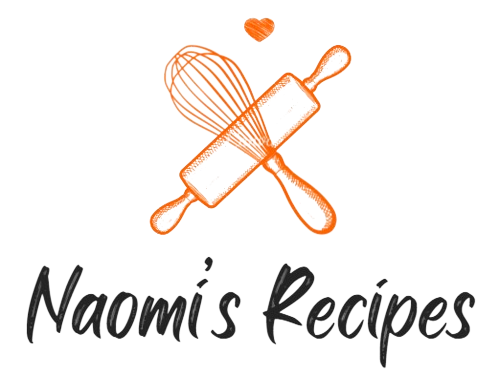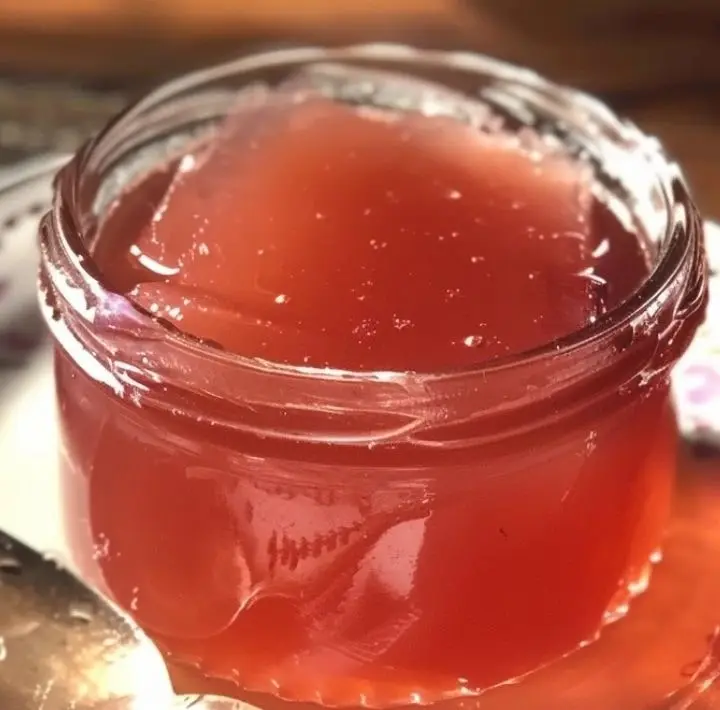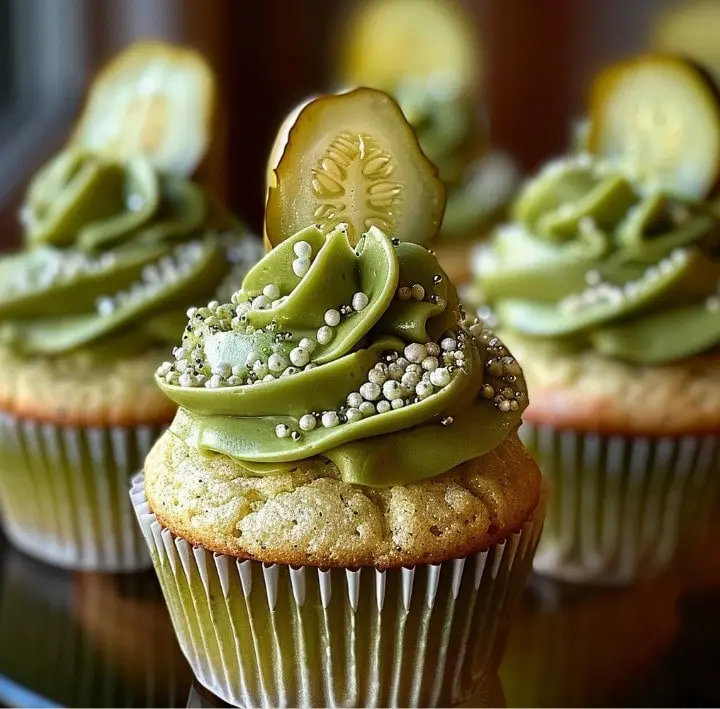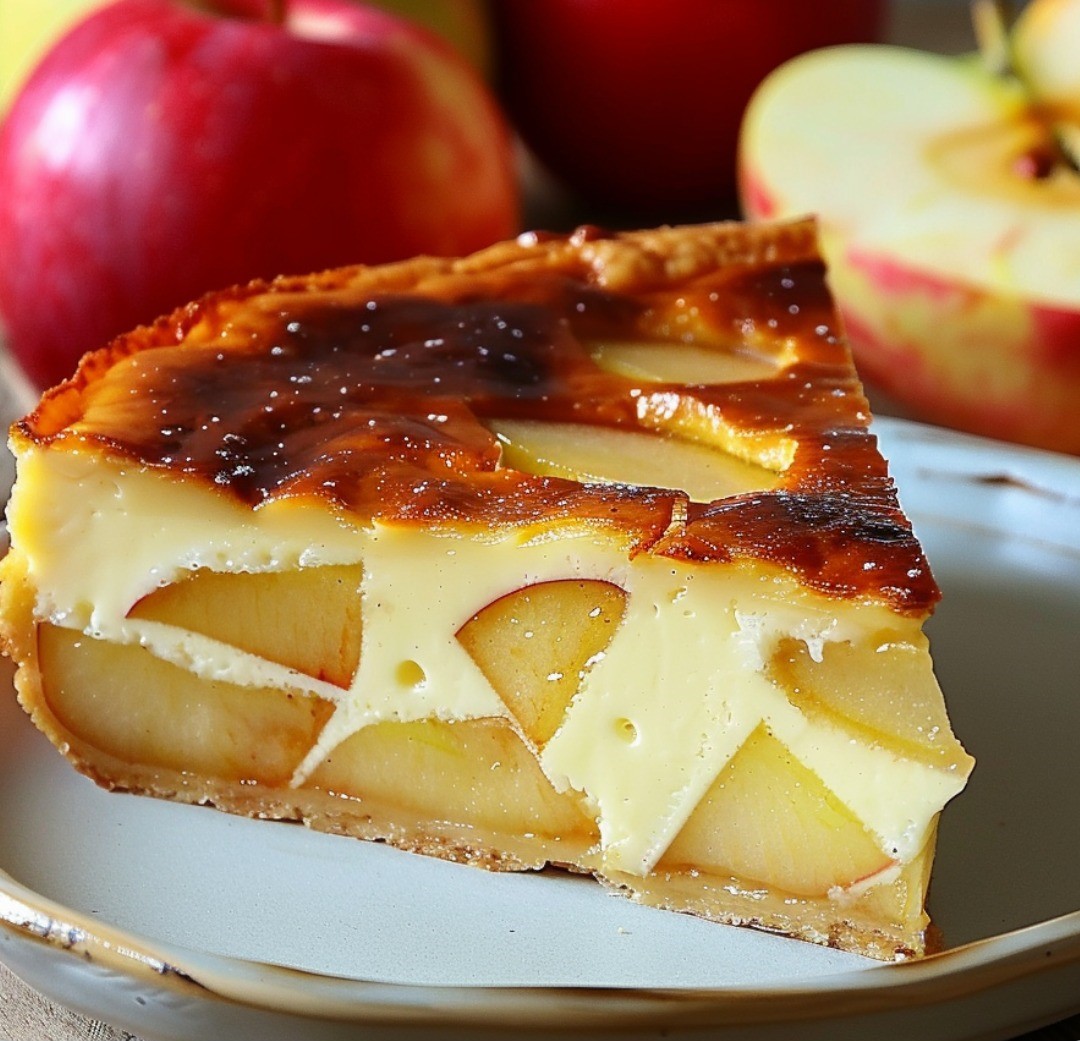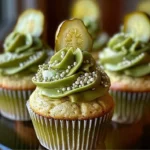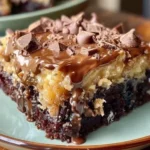Rhubarb jelly is a delightful, tangy preserve that brings the unique flavor of rhubarb to your table. Known for its tart taste, rhubarb is a versatile vegetable often used in sweet dishes despite its botanical classification. Homemade rhubarb jelly is a fantastic way to enjoy the essence of rhubarb throughout the year.
Making jelly at home allows you to control the ingredients and ensure a pure, preservative-free product. Plus, the process of making and canning jelly can be a rewarding and enjoyable experience. With a few simple steps, you can transform fresh rhubarb into a jar of sweet, tangy goodness that’s perfect for spreading on toast, adding to desserts, or gifting to friends and family.
For those interested in preserving fruits and vegetables, learning how to make rhubarb jelly is a great skill to have. The homemade version often surpasses store-bought varieties in both flavor and quality. To get started, it’s essential to understand the basic ingredients and equipment needed for making and canning your jelly. This guide will walk you through the entire process, ensuring your rhubarb jelly turns out perfectly every time.
What is Rhubarb Jelly?
Rhubarb jelly is a clear, sweet spread made from the juice of cooked rhubarb stalks, sugar, and pectin, which helps it set. Unlike jam, which includes fruit pieces, jelly is made solely from the strained juice, giving it a smooth, gel-like consistency. The process involves cooking rhubarb with water, straining the mixture, and then combining the juice with sugar and pectin before boiling it to achieve the desired texture.
Rhubarb’s naturally tart flavor makes it an excellent candidate for jelly, as the sugar balances the acidity, resulting in a deliciously tangy spread. This jelly can be enjoyed on its own or used as an ingredient in various recipes, from glazes for meats to fillings for pastries. For those new to making preserves, rhubarb jelly is a great starting point due to its straightforward process and delicious results. Explore more about canning and preserving techniques to expand your culinary skills.
Nutritional Benefits of Rhubarb
Rhubarb is not only a tasty addition to various recipes but also a nutritional powerhouse. This low-calorie vegetable is packed with essential nutrients that contribute to overall health.
Nutritional Content:
- Vitamins: Rhubarb is rich in vitamin K, which is crucial for bone health and blood clotting. It also contains vitamin C, an antioxidant that supports immune function and skin health.
- Minerals: This vegetable provides a good amount of calcium and potassium. Calcium is essential for maintaining strong bones and teeth, while potassium helps regulate blood pressure and supports cardiovascular health.
- Dietary Fiber: Rhubarb is a good source of dietary fiber, which aids in digestion and helps maintain a healthy weight by promoting a feeling of fullness.
Health Benefits:
- Bone Health: The high vitamin K content in rhubarb helps improve bone density and reduces the risk of osteoporosis.
- Heart Health: Potassium in rhubarb aids in controlling blood pressure levels, reducing the risk of heart disease.
- Digestive Health: The dietary fiber in rhubarb supports a healthy digestive system by preventing constipation and promoting regular bowel movements.
- Antioxidant Properties: Rhubarb contains antioxidants such as vitamin C, which protect the body from oxidative stress and inflammation, potentially lowering the risk of chronic diseases.
Selecting and Preparing Rhubarb
Choosing the right rhubarb and preparing it correctly are essential steps in making the perfect rhubarb jelly. Here’s how to ensure you get the best results:
How to Choose the Best Rhubarb Stalks:
- Color and Firmness: Look for firm, crisp stalks that are bright red or pink. These stalks are typically sweeter and more flavorful than green ones. The vibrant color also enhances the visual appeal of your jelly.
- Avoid Blemishes: Ensure the stalks are free from blemishes, bruises, or any signs of decay. Avoid stalks that are limp or split at the ends, as these may indicate poor quality or age.
- Leaves: Rhubarb leaves are toxic and should be removed. When selecting rhubarb, make sure the leaves are fresh if they are still attached, as this can be an indicator of the stalk’s freshness.
Tips on Preparing Rhubarb for Jelly-Making:
- Washing: Rinse the stalks thoroughly under cold water to remove any dirt or debris. This step is crucial for maintaining the purity of the jelly.
- Trimming: Cut off and discard the leaves and the bottom ends of the stalks. Rhubarb leaves contain oxalic acid, which is harmful if ingested.
- Chopping: Chop the rhubarb into small, uniform pieces. This ensures even cooking and easier extraction of juice. Aim for pieces about 1/2 to 1 inch in size.
Ingredients and Equipment Needed
Creating rhubarb jelly at home requires a few specific ingredients and tools to ensure the process goes smoothly and the results are delicious.
Ingredients:
- 4 cups rhubarb, chopped: Fresh rhubarb stalks, trimmed and cut into small pieces.
- 3 cups water: Used to extract the juice from the rhubarb.
- 1 packet powdered pectin: About 2 tablespoons, necessary for helping the jelly set.
- 4 cups sugar: Provides sweetness and helps with the gelling process.
- 2 tablespoons lemon juice: Adds acidity, which helps in setting the jelly and enhances flavor.
Essential Equipment:
- Large pot: A heavy-bottomed pot for cooking the rhubarb and later boiling the jelly mixture.
- Cheesecloth or jelly bag: Used for straining the cooked rhubarb to extract clear juice.
- Measuring cups and spoons: Essential for precise measurements of ingredients.
- Stirring spoon: A long-handled spoon for stirring the mixture while it cooks.
- Canning jars and lids: Sterilized jars to store the finished jelly. Ensure they are suitable for canning.
- Jar funnel: Helps in pouring the hot jelly into jars without spills.
- Boiling water canner: For processing the filled jars to ensure they are sealed and safe for long-term storage.
- Ladle: For transferring the hot jelly into jars.
Step-by-Step Guide to Making Rhubarb Jelly
Making rhubarb jelly at home is a rewarding process that involves several key steps, from preparing the rhubarb to canning the final product. Follow this detailed guide to ensure your jelly sets perfectly and tastes delicious.
Step 1: Prepare the Rhubarb
- Select and Clean the Rhubarb:
- Choose fresh, firm rhubarb stalks that are bright red or pink. Avoid stalks that are limp or blemished.
- Rinse the rhubarb thoroughly under cold water to remove any dirt.
- Trim and Chop:
- Cut off and discard the leaves and the bottom ends of the stalks.
- Chop the rhubarb into small, uniform pieces, about 1/2 to 1 inch in size. This ensures even cooking and juice extraction.
Step 2: Cook the Rhubarb
- Combine with Water:
- In a large pot, combine 4 cups of chopped rhubarb and 3 cups of water.
- Bring the mixture to a boil over medium-high heat, then reduce the heat and let it simmer for 10-15 minutes, or until the rhubarb is soft and the liquid is pink.
- Strain the Mixture:
- Pour the cooked rhubarb and liquid through a cheesecloth or jelly bag set over a large bowl. Let it strain naturally for several hours or overnight to extract clear juice.
- Squeeze the cheesecloth or jelly bag gently to get as much juice as possible. You should have about 3 cups of rhubarb juice.
Step 3: Prepare the Jelly
- Combine Juice and Pectin:
- Return the rhubarb juice to the large pot. Stir in 1 packet of powdered pectin (about 2 tablespoons).
- Bring the mixture to a full rolling boil over high heat, stirring constantly to dissolve the pectin.
- Add Sugar:
- Add 4 cups of sugar all at once. Continue stirring and bring the mixture back to a rolling boil.
- Boil hard for 1 minute, stirring constantly to prevent burning.
- Add Lemon Juice:
- Remove the pot from heat and stir in 2 tablespoons of lemon juice. This helps with the gelling process and adds a hint of tartness to the jelly.
Step 4: Skim and Jar the Jelly
- Skim Foam:
- Skim off any foam that forms on the surface of the jelly with a metal spoon. This ensures a clear, smooth jelly.
- Fill Jars:
- Using a ladle and a jar funnel, pour the hot jelly into sterilized canning jars, leaving about 1/4 inch of headspace at the top.
- Wipe the rims of the jars with a clean, damp cloth to remove any residue. Place the lids on the jars and screw on the bands until they are fingertip-tight.
Step 5: Process the Jelly
- Boiling Water Bath:
- Place the filled jars into a boiling water canner, ensuring they are covered by at least 1 inch of water.
- Bring the water to a full rolling boil and process the jars for 10 minutes (adjust for altitude as needed).
- Cool and Store:
- Remove the jars from the canner and let them cool undisturbed for 24 hours. Check the seals by pressing the center of each lid; it should not flex up and down.
- Label the jars with the date and store them in a cool, dark place. Properly sealed jars can be stored for up to one year.
Tips for Ensuring Jelly Sets Properly:
- Use fresh, high-quality rhubarb and follow the recipe measurements accurately.
- Ensure the mixture reaches a full rolling boil after adding the pectin and sugar.
- Add lemon juice to aid the gelling process.
Common Mistakes and How to Avoid Them:
- Not Boiling Long Enough: Ensure the mixture reaches a full rolling boil to activate the pectin.
- Inaccurate Measurements: Measure ingredients precisely. Too much or too little pectin or sugar can affect the set.
- Skipping the Lemon Juice: The acidity from the lemon juice is crucial for proper gelling.
For further details, refer to resources on canning basics and the canning process. Additionally, learn more about home canning techniques to enhance your jelly-making skills.
Variations and Flavor Enhancements
Adding Strawberries, Vanilla, or Other Fruits:
Enhancing your rhubarb jelly with additional fruits or flavors can create delightful variations. Here are a few popular options:
- Strawberry-Rhubarb Jelly:
- Combining strawberries with rhubarb is a classic pairing. The sweetness of strawberries balances the tartness of rhubarb, resulting in a well-rounded flavor.
- To make strawberry-rhubarb jelly, replace half of the rhubarb with chopped strawberries. Follow the same cooking process, ensuring both fruits are soft before straining.
- For a detailed recipe, refer to this Strawberry Rhubarb Jelly Guide from One Sweet Appetite.
- Vanilla-Rhubarb Jelly:
- Adding vanilla bean or vanilla extract gives the jelly a rich, aromatic flavor. It pairs beautifully with the tartness of rhubarb.
- Split and scrape one vanilla bean, adding it to the rhubarb and water mixture. Alternatively, stir in 1-2 teaspoons of vanilla extract after removing the jelly from heat.
- For more information, check out this Vanilla Rhubarb Jelly Recipe from The View from Great Island.
- Other Fruit Combinations:
- Experiment with different fruits like apples, raspberries, or oranges to create unique flavor profiles.
- Substitute part of the rhubarb with your chosen fruit, ensuring the total fruit quantity remains the same. Adjust sugar levels to balance the new flavors.
Using Different Types of Pectin:
Pectin is crucial for setting jelly. Here’s how different types of pectin can be used:
- Powdered Pectin:
- The most commonly used pectin in jelly recipes. Follow package instructions for best results.
- It’s added to the fruit juice before boiling. Ensure the mixture reaches a full rolling boil to activate the pectin.
- Liquid Pectin:
- Easier to use and often preferred for its consistent results. Add it after the fruit juice and sugar mixture has boiled.
- For precise instructions, refer to this guide on using liquid pectin from My Island Bistro Kitchen.
- Low-Sugar or No-Sugar Pectin:
- Ideal for those looking to reduce sugar intake. These pectins allow jelly to set with less sugar or alternative sweeteners.
- Follow the specific instructions on the package as these types may require different preparation steps.
Canning and Preservation Techniques
Step-by-Step Guide to Canning Jelly Safely:
Canning is a crucial step to ensure your homemade rhubarb jelly is safely preserved and can be enjoyed year-round. Follow these steps for a successful canning process:
- Prepare Your Equipment:
- Sterilize canning jars and lids by boiling them in water for 10 minutes. Keep them hot until ready to use.
- Prepare a large pot or boiling water canner filled with water. Ensure it’s deep enough to cover the jars by at least 1 inch.
- Fill the Jars:
- Once your jelly is ready and still hot, use a ladle and jar funnel to pour the jelly into the sterilized jars, leaving 1/4 inch of headspace.
- Wipe the rims of the jars with a clean, damp cloth to remove any residue that could prevent sealing.
- Seal the Jars:
- Place the sterilized lids on the jars and screw on the bands until fingertip-tight. Do not over-tighten.
- Process the Jars:
- Place the filled jars into the boiling water canner using a jar lifter. Ensure the jars are covered by at least 1 inch of water.
- Bring the water to a full rolling boil and process the jars for 10 minutes. Adjust processing time based on your altitude (add 1 minute for each 1,000 feet above sea level).
- For detailed instructions, refer to the Bernardin Home Canning Guide.
- Cool the Jars:
- After processing, remove the jars from the canner and place them upright on a towel or cooling rack. Let them cool undisturbed for 24 hours.
- Check the seals by pressing the center of each lid. If it does not flex up and down, the jar is sealed. If it does, refrigerate and use those jars first.
Storage Tips and Shelf-Life of Homemade Rhubarb Jelly:
Proper storage ensures your rhubarb jelly stays safe and delicious for as long as possible:
- Cool and Dark Storage:
- Store sealed jars in a cool, dark place such as a pantry or cupboard. Avoid direct sunlight and fluctuating temperatures.
- Labeling:
- Label each jar with the date of canning to keep track of its age. Use the oldest jars first.
- Shelf-Life:
- Properly sealed and stored jars of rhubarb jelly can last up to one year. Once opened, refrigerate the jelly and use it within one month.
- For more detailed information on food preservation, visit Wikipedia’s Food Preservation Page.
Serving Suggestions
Creative Ways to Use Rhubarb Jelly in Recipes:
Rhubarb jelly is a versatile condiment that can be used in a variety of creative ways to enhance your meals:
- Glaze for Meats:
- Use rhubarb jelly as a glaze for pork, chicken, or turkey. Brush it on during the last 10 minutes of roasting or grilling for a sweet and tangy finish.
- For a detailed recipe, check out Allrecipes’ Rhubarb Glazed Chicken.
- Sandwich Spread:
- Spread rhubarb jelly on sandwiches, particularly those with turkey or ham, for an added layer of flavor. It pairs especially well with mustard or mayo.
- Baking Ingredient:
- Incorporate rhubarb jelly into baked goods. Swirl it into muffin or cake batter, or use it as a filling for pastries and thumbprint cookies.
- For ideas, visit Taste of Home’s Baking with Jelly.
Pairing Suggestions with Cheeses, Bread, and Desserts:
- Cheese Pairings:
- Pair rhubarb jelly with a variety of cheeses. It complements soft cheeses like brie and goat cheese, as well as sharp cheeses like aged cheddar.
- Serve it on a cheese board with crackers and nuts for a delicious appetizer.
- Bread and Crackers:
- Spread rhubarb jelly on fresh, crusty bread or toast for a simple yet delightful snack. It’s also excellent on scones and biscuits.
- For more inspiration, explore The Kitchn’s Bread Pairings.
- Desserts:
- Use rhubarb jelly as a topping for ice cream or yogurt. It adds a sweet and tart flavor that enhances creamy desserts.
- Drizzle it over cheesecake or panna cotta for an elegant presentation.
Troubleshooting Common Problems
Making rhubarb jelly can sometimes come with challenges. Here are solutions to common problems you might encounter:
Jelly That Doesn’t Set:
- Reboil the Jelly:
- If your jelly doesn’t set, it might not have reached the correct temperature or you may need more pectin. Pour the unset jelly back into the pot, add an additional packet of powdered pectin, and bring it to a full rolling boil for 1-2 minutes.
- Follow the detailed instructions from Practical Self Reliance.
- Add Lemon Juice:
- The acidity in lemon juice helps pectin set. If your jelly is too runny, add 2 tablespoons of lemon juice and reboil the mixture.
- Check Pectin Type:
- Ensure you’re using the right type of pectin. For low-sugar or no-sugar recipes, make sure to use pectin designed for those purposes, as regular pectin might not work as expected.
Fixing Cloudy Jelly:
- Strain Properly:
- Cloudy jelly is often caused by improper straining. Always use a clean cheesecloth or jelly bag and let the juice drip naturally without squeezing, as squeezing forces pulp into the juice.
- Refer to The Food Blog for tips on achieving clear jelly.
- Proper Cooking Temperature:
- Ensure that the jelly mixture reaches the correct temperature. Use a candy thermometer to make sure it reaches 220°F (104°C) to achieve a proper set without cloudiness.
Other Common Issues:
- Foam on Jelly:
- Foam can form during boiling. Skim it off with a metal spoon before canning to ensure a smooth texture.
- Jelly Too Firm:
- If your jelly is too firm, it might have been overcooked or too much pectin was used. Next time, reduce the boiling time slightly or adjust the pectin amount.
Health and Safety Tips
Ensuring the safety and hygiene of your homemade rhubarb jelly involves careful preparation and canning practices. Here are some essential tips:
Important Canning Safety Tips:
- Sterilize Jars and Lids:
- Boil jars and lids for at least 10 minutes before use to kill any bacteria. Keep them hot until filling to prevent contamination.
- Proper Headspace:
- Leave 1/4 inch of headspace in each jar to allow for expansion during processing and to ensure a proper seal.
- Boiling Water Bath:
- Process jars in a boiling water bath for 10 minutes. This method helps eliminate any harmful microorganisms and ensures a vacuum seal.
Ensuring Hygienic Preparation and Storage:
- Clean Work Area:
- Ensure your kitchen surfaces, utensils, and hands are clean before beginning the jelly-making process. This reduces the risk of contamination.
- Avoid Touching Jar Rims:
- When filling jars, avoid touching the rims to keep them clean. Wipe any spills with a clean, damp cloth.
- Check Seals:
- After jars have cooled for 24 hours, check the seals by pressing the center of each lid. If the lid pops up and down, the jar is not sealed properly and should be refrigerated and used first.
Frequently Asked Questions
What to Do If Jelly Doesn’t Set? If your rhubarb jelly doesn’t set, don’t worry. You can fix it by reheating the jelly. Pour the unset jelly back into the pot, add another packet of powdered pectin, and bring it to a full rolling boil for 1-2 minutes. This should help it set properly. For more detailed instructions, refer to Practical Self Reliance.
Can I Reduce the Sugar Content? Yes, you can reduce the sugar content in your rhubarb jelly, but it may affect the setting process and shelf-life. Use low-sugar or no-sugar pectin, which is specifically designed to work with reduced sugar levels. Follow the package instructions carefully to ensure proper results. For more tips, see the Guide on Low-Sugar Pectin.
How Long Does Homemade Jelly Last? Properly canned and sealed rhubarb jelly can last up to one year when stored in a cool, dark place. Once opened, it should be refrigerated and used within one month. Ensure jars are properly sealed to maintain the jelly’s longevity. For more information on storage, visit Wikipedia’s Food Preservation Page.
Can I Use Frozen Rhubarb? Yes, you can use frozen rhubarb to make jelly. Thaw the rhubarb completely before using it. Frozen rhubarb will release more juice, which is beneficial for jelly making. The process remains the same as with fresh rhubarb. Learn more from One Sweet Appetite.
Is It Necessary to Peel Rhubarb? No, it is not necessary to peel rhubarb for making jelly. The skin adds color and flavor to the jelly. Simply trim the ends and chop the stalks into small pieces. For further details on preparation, check out The Kitchn’s Guide.
Print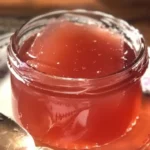
Rhubarb Jelly
- Total Time: 45 minutes
- Yield: 4 servings 1x
Description
This rhubarb jelly recipe captures the tart, vibrant flavor of fresh rhubarb, creating a delightful spread that’s perfect for toast, pastries, or as a glaze for meats. Making jelly at home not only ensures a pure, preservative-free product but also allows you to enjoy the essence of rhubarb all year round.
Ingredients
- 4 cups rhubarb, chopped
- 3 cups water
- 1 packet (about 2 tablespoons) powdered pectin
- 4 cups sugar
- 2 tablespoons lemon juice
Instructions
- Cook the Rhubarb: In a large pot, combine rhubarb and water. Bring to a boil, then simmer for 10-15 minutes, or until the rhubarb is soft and the liquid is pink.
- Strain the Mixture: Strain the mixture through a cheesecloth or jelly bag, squeezing to extract as much juice as possible. Discard the solids. You should have about 3 cups of juice.
- Prepare the Jelly: Return the juice to the pot and stir in the pectin. Bring to a full rolling boil over high heat, stirring constantly.
- Add Sugar: Add the sugar all at once, and return to a rolling boil. Boil hard for 1 minute, stirring constantly.
- Finish the Jelly: Remove from heat and stir in lemon juice. Skim off any foam.
- Can the Jelly: Pour the jelly into sterilized jars, leaving 1/4-inch headspace. Process in a boiling water canner for 10 minutes.
Notes
- Sterilization: Ensure jars and lids are properly sterilized to prevent contamination and ensure long shelf life.
- Juice Measurement: It is crucial to measure the rhubarb juice accurately. Too much or too little juice can affect the setting of the jelly.
- Pectin: Follow the pectin package instructions if they vary from this recipe. Different brands might have specific requirements.
- Foam Removal: Skimming off the foam improves the clarity of the jelly. Use a metal spoon for best results.
- Sealing: Check the seals after 24 hours. If any jars did not seal properly, refrigerate and use those first.
- Prep Time: 20 minutes
- Cook Time: 25 minutes
- Category: Dessert
- Cuisine: American
Nutrition
- Calories: 50 kcal per tablespoon
